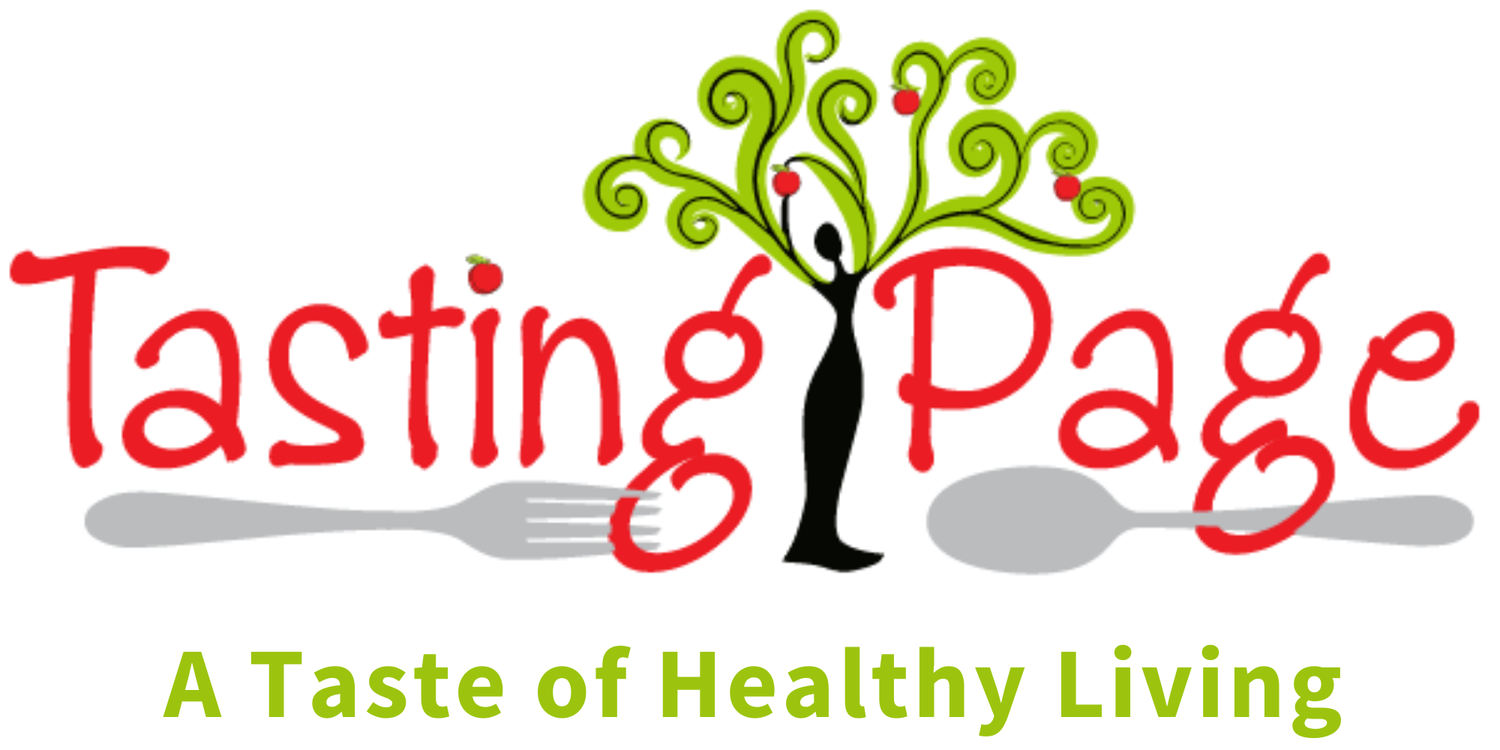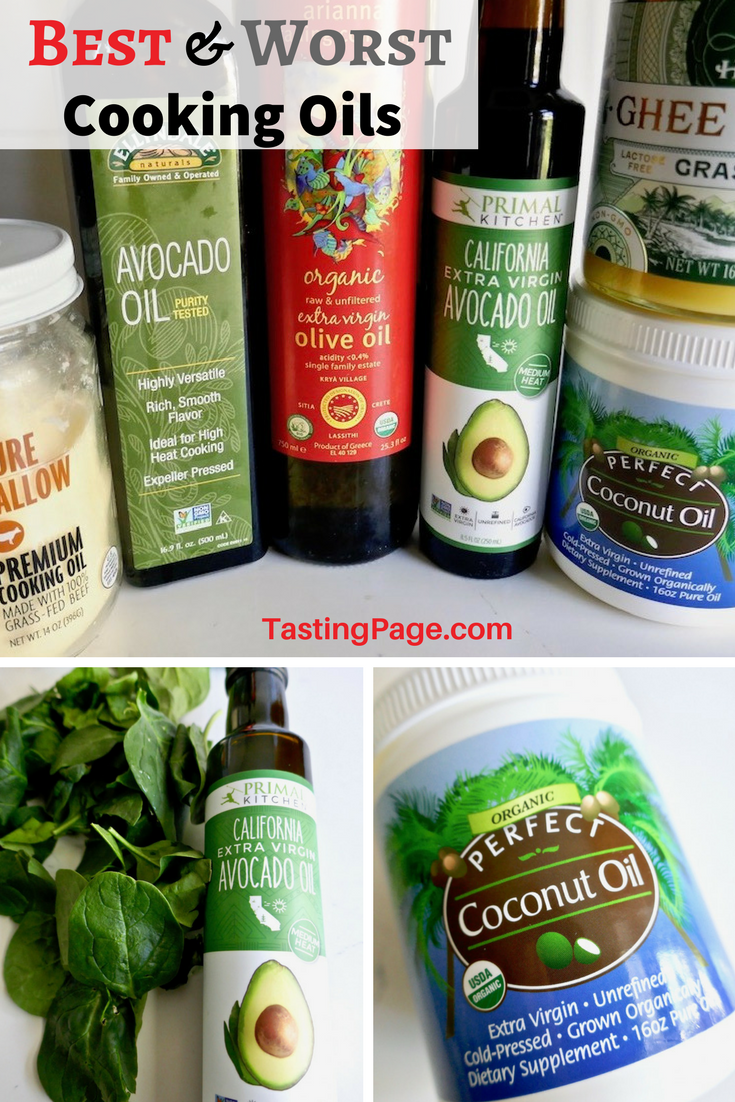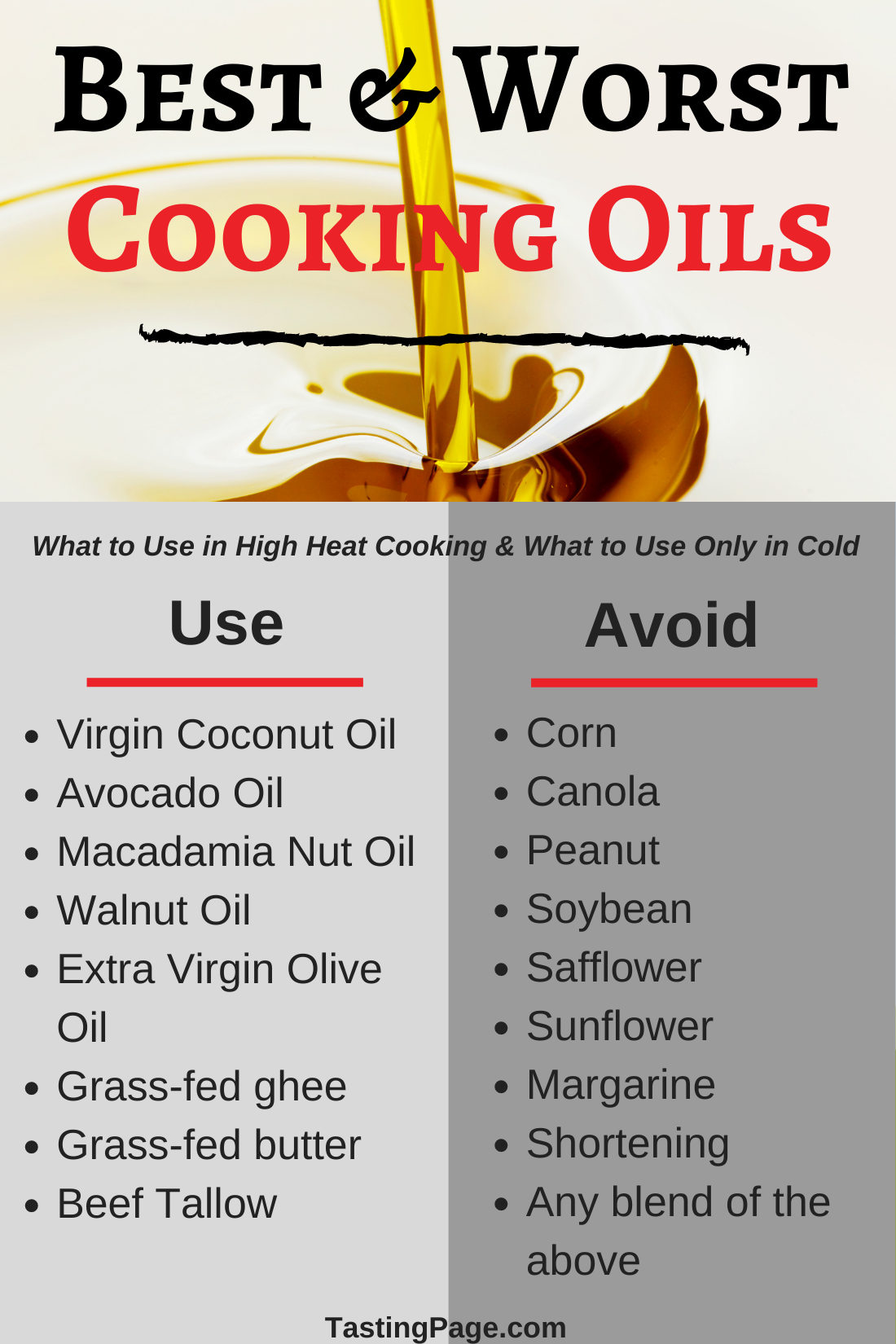Best and Worst Cooking Oils
/Your guide to the best and worst cooking oils, including which oils to avoid and why, and which cooking oils you'll want to reach for on a regular basis.
This page contains affiliate links, but clicking on them will not change the price for you, but will go to help defray the costs of running TastingPage. Full Disclosure.
If you cook or heat your food up regularly, chances are, you use a decent amount of oil. With a lot of oil going into your system, you want to ensure that you’re using healthy products.
Here are some things to look for the next time you’re shopping for oils, along with my recommendations for the best and worst cooking oils.
Worst Cooking Oils
At the top of the list for worst cooking oils is vegetable and seeds oils. Here’s why.
Omega-3 to Omega-6 Balance
These oils are polyunsaturated and high in omega-6s.
While you do need some omega-6s in your diet, most people get about 20 times more omega-6s than they should.
It’s rare anyone is deficient in omega-6 fatty acids.
You want a healthy ratio of omega-6s to omega-3s, but many people way overdo the omega-6s.
In fact, consuming too many 6s can even negate all the nutritional benefits you get from eating those delicious omega-3-filled wild-caught salmon dinners.
Consuming too many omega-6 fatty acids can also lead to inflammation in the body.
When your body becomes inflamed, it becomes more susceptible to disease and mental illness.
Vegetable and Seed Oil Production
The other problem with vegetable oil is that it’s highly refined, meaning, it’s been stripped down and uber-processed.
Chemical solvents are used to help extract the oil from the nut or seed. The processing is done at high temperatures, leaving you with a product that’s unstable and highly susceptible to oxidation.
Guess what happens when you heat an already unstable oil? It can easily break down and release toxins into your food.
GMO Issues
Then there’s the issue of GMOs and vegetable oil. Over 90% of US-based canola is genetically modified. It’s resistant to the herbicide Roundup, used for weed control.
Reports have shown that canola oil has caused neurological issues, along with kidney and liver problems. I don’t know about you, but I’m not interested in putting my food in that oil.
As you can see, these vegetable and seed oils all have layers of chemicals contributing to an unhealthy nutritional profile, making them cooking oils to avoid.
Specific Oils to Avoid
Try and avoid all of these unhealthy vegetable and seed-based cooking oils:
Corn
Canola
Peanut
Soybean
Safflower
Sunflower
Margarine
Shortening
Any blend of the above
Best Cooking Oils
Fear not, there are some healthier alternatives to vegetable and seed oils. Here are the best cooking oils.
Virgin Coconut Oil
Coconut oil has become quite the darling of the culinary world.
You can put it on your hair, skin, and in your belly. It’s high in saturated fat, but again, don’t be scared of this fat, but do use it in moderation, and in my tasty lemon fat bombs.
When it comes to cooking, coconut oil has a smoke point of 350F, which is reasonable, but not super high, so only use it for gentle sautéing. Make sure to look for organic, unrefined, cold-pressed like this one that I love.
Avocado Oil
For higher heat cooking, I use avocado oil. Avocado oil has a smoke point of 400F, so there’s less to worry about when using it over high heat.
And for those that don’t like the subtle taste of coconut, avocado oil is a good choice.
I use this one for high heat, and this one for salad dressing and cold preparations.
Macadamia Nut Oil
If you’re feeling like a splurge, macadamia nut oil can be a fun treat.
It has higher levels of monounsaturated fat than extra virgin olive oil, and also a higher smoke point at 425F.
The rich, nutty flavor works well in many dishes.
Extra Virgin Olive Oil
Olive oil has nice heart-healthy, anti-inflammatory properties due to its high levels of antioxidant-rich polyphenols.
It’s a monounsaturated fat with some nutritional benefits, but it’s important to note that olive oil shouldn’t be used in high heat cooking.
Olive oil has a low smoke point so it’ll break down quickly. I reserve olive oil for salad dressing or finishing drizzles on food. Look for organic, cold or expeller pressed like this.
Other Good Fat Cooking Options
You can also cook with healthy organic, grass-fed fats like butter (if you can tolerate it), ghee (casein is removed so some have an easier time digesting it), and tallow.
Ghee has a high smoke point of 485F and tallow is 420F, so I use them often in higher heat cooking.
If I’m making a paleo friendly beef based dinner, then I like to use tallow for more richness. It’s important to look for grass-fed and pastured products. I like this ghee and this beef tallow.

























